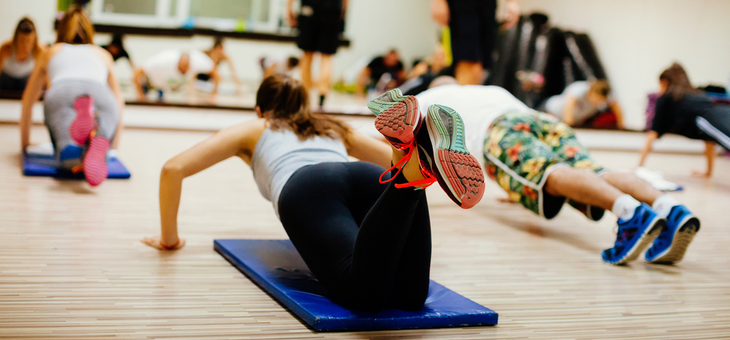High intensity interval training (HIIT) is not just for time-poor 20-somethings, it is important for older people keen to maintain good health.
The five-year randomised ‘Generation 100’ trial of Norwegians aged 70 to 77 found that HIIT lowers the risk of premature death compared with recommended exercise guidelines and moderate intensity continuous training (MICT).
“We suggest that future guidelines for physical activity, at least for older adults, should be more specific in requiring that at least part of the physical activity should be performed at high intensity,” the study, published in the British Medical Journal concluded.
The study found “larger health benefits” in those whose exercise regimes had more high intensity exercise compared with those who undertook mainly moderate intensity exercise.
“Exercise in general seems to be good for the health of the elderly. And our study results show that on top of that, training regularly at high intensity has an extra positive effect,” study leader Dorthe Stensvold, a researcher at the Norwegian University of Science and Technology, told Norwegian SciTech News.
“Intervals are safe and feasible for most people. And adding life to years, not only years to life, is an important aspect of healthy ageing, and the higher fitness and health-related quality of life from HIIT in this study is an important finding.”
Participants in the study’s control group were asked to follow the Norwegian physical activity guidelines for 2012 – 30 minutes of moderate level physical activity most days. No further supervision was given.
Participants in the HIIT and MICT groups were asked to exchange two of the five 30-minute moderate intensity physical activity sessions each week (as recommended by Norwegian health authorities) with two HIIT sessions (a 10 minute warm-up followed by 4×4 minute intervals at about 90 per cent of peak heart rate.
“By high intensity we mean training that gets you really sweaty and out of breath. Now our hope is that the national recommendations for physical activity will be modified to encourage older people even more strongly to do high intensity training – either as their only form of exercise or to supplement more moderate training,” Dr Stensvold said.
An associated age-related exercise study conducted by PhD candidate Jon Magne Letnes found age had the least effect on fitness level for people who exercise regularly at high intensity.
“This group had a drop in fitness of 5 per cent over 10 years. By comparison, fitness levels dropped by 9 per cent in individuals who exercised regularly but not at high intensity. Those who were physically inactive lost as much as 16 per cent of their physical conditioning over 10 years,” said Dr Letnes.
“Blood pressure, waist measurement, cholesterol and resting heart rate increased less in people who maintained their conditioning than in those who had a larger drop in fitness figures.”
The benefits of ‘exercise snacks’ of HIIT have also been extolled by two Australian experts concerned by how many of us are suffering poor health outcomes because of sedentary occupations or lifestyles.
Professor David Dunstan, head of the Physical Activity Laboratory at Melbourne’s Baker Heart and Diabetes Institute, told The Age “fitting frequent short bursts of movement, even as brief as one or two minutes, into the day can benefit heart health and have positive effects on blood glucose levels and insulin sensitivity”.
Repeated brief exercise “breaks up the prolonged sitting that ups the risk of rising levels of blood sugar and sluggish blood flow”.
“When blood flow is reduced, blood pressure increases in an effort to pump blood around the body …” Prof. Dunstan explained.
“You want blood to keep flowing forward rather than slow down or stagnate – which can happen if you sit for long periods,” says Frances Taylor, a PhD student at the Institute’s Physical Activity Laboratory.
“We found that frequent breaks to interrupt sitting with leg raises, squats and calf raises significantly improved blood vessel function. Taking six-minute breaks every hour was good, but three minute breaks every 30 minutes was better.”
Prof. Dunstan says “danger zones” of continuous sitting can include “the first three hours of the working day, the post-dinner slump – or the summer holiday Netflix binge”. He suggests setting a timer to prompt hourly movement.
Emmanuel Stamatakis, professor of physical activity, lifestyle and population health at the University of Sydney’s Charles Perkins Centre, says “one minute of vigorous movement like walking fast uphill equals two minutes of moderate movement like a brisk walk on the flat”.
“It also has a more profound effect on our cardiovascular fitness compared to light or moderate exercise: by increasing the body’s capacity to transport oxygen to muscles, it makes any physical activity easier so that we can do more for longer,” he explains.
“This is important for less sporty people, especially as we age, because it improves our ability to stay independent.”
Do you feel ready to embrace more intense exercise? Would you need guidance if undertaking high intensity exercise?
If you enjoy our content, don’t keep it to yourself. Share our free eNews with your friends and encourage them to sign up.
Related articles:
https://www.yourlifechoices.com.au/health/assessing-your-current-fitness
https://www.yourlifechoices.com.au/technology/phones/smartphones/five-best-free-fitness-apps
https://www.yourlifechoices.com.au/health/wellbeing/embrace-technology-in-fitness

